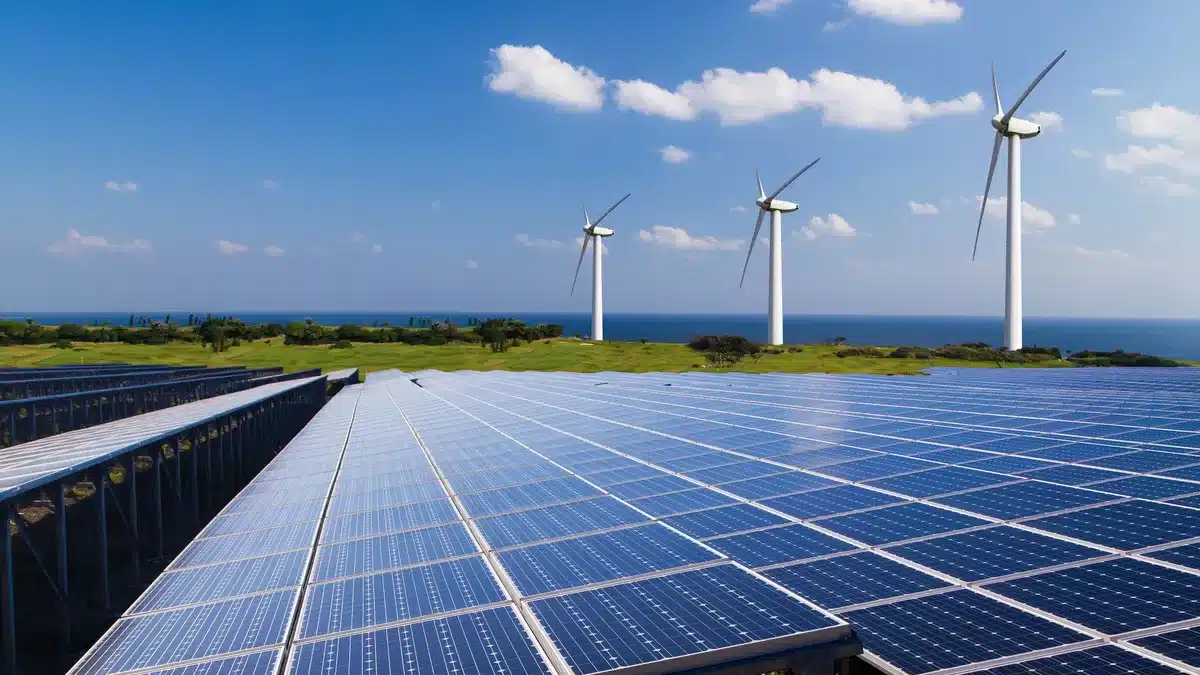Non-Fossil Sources Account for 50% of India’s Power Grid

India has reached a significant milestone in its energy transition by achieving 50% of its installed electricity capacity from non-fossil fuel sources, five years ahead of its target under the Nationally Determined Contributions (NDCs) to the Paris Agreement. This accomplishment highlights India’s commitment to climate action and sustainable development, showcasing the acceleration of its clean energy transition under Prime Minister Narendra Modi‘s leadership. Union Minister of New and Renewable Energy, Pralhad Joshi, emphasized that this achievement positions India as a leader in global climate solutions.
Policy-Driven Progress Fuelling Clean Energy Growth
India’s achievement of 50% non-fossil fuel capacity is a testament to effective policy design and implementation. The country has launched several flagship programs, including the Pradhan Mantri Kisan Urja Suraksha evam Utthaan Mahabhiyan (PM-KUSUM) and the PM Surya Ghar scheme, which have been instrumental in this transition. The PM-KUSUM initiative has empowered numerous farmers by providing solar-powered pumps, enhancing energy security and promoting sustainable agricultural practices. Additionally, the PM Surya Ghar scheme has revolutionized rooftop solar energy access for over one crore households, fostering decentralized energy generation and enabling citizens to become energy producers.
The development of solar parks and the National Wind-Solar Hybrid Policy has also laid a robust foundation for renewable energy growth. The bioenergy sector, once overlooked, is now a vital contributor to both rural livelihoods and clean energy generation. These initiatives not only support India’s clean energy goals but also promote equity and climate responsibility, demonstrating the interconnectedness of sustainable development and social justice.
Expanding Renewable Base with Co-Benefits
The expansion of solar parks across India has facilitated utility-scale renewable energy installations at competitive tariffs. Wind energy, particularly in states like Gujarat and Tamil Nadu, plays a crucial role in meeting the country’s evening peak power demand. The advancements in the bioenergy sector contribute to a circular economy while creating significant employment opportunities in rural areas.
These initiatives have led to a decarbonized power sector, yielding numerous co-benefits such as improved energy access, job creation, reduced air pollution, and enhanced public health outcomes. India’s clean energy revolution is not solely focused on emissions reduction; it also emphasizes inclusive growth and social equity, ensuring that the benefits of this transition reach all segments of society.
India’s Global Leadership in Climate Action
India’s progress in clean energy is particularly noteworthy on the global stage. Despite having one of the lowest per capita emissions, India is among the few G20 nations on track to meet or exceed its NDC commitments. At international forums like the G20 and the Conference of Parties (COP) to the United Nations Framework Convention on Climate Change, India has consistently advocated for climate equity and sustainable development pathways.
By achieving the 50% non-fossil milestone ahead of schedule, India reinforces its position as a leader in clean energy, demonstrating that economic growth and environmental stewardship can coexist. This accomplishment not only reflects India’s commitment to climate action but also sets a precedent for other nations to follow.
Towards a Modern, Inclusive Energy Future
The early achievement of 50% non-fossil fuel capacity opens doors for even greater ambitions. The next phase of India’s energy transition must focus on quality, equity, and resilience in clean energy access. Key priorities include doubling per capita clean electricity consumption, particularly in rural and underserved areas, and promoting distributed renewable systems alongside energy-efficient appliances.
Building a robust, digitally integrated electricity grid is essential for managing high levels of renewable energy penetration and demand fluctuations. Expanding the deployment of Battery Energy Storage Systems (BESS) and pumped hydro storage will be critical for ensuring grid reliability. Additionally, promoting circularity in the lifecycle of renewable energy technologies will support sustainable material use. Accelerated investments in green hydrogen will also play a vital role in deepening decarbonization across various sectors.
As India continues its journey towards achieving 500 GW of non-fossil capacity by 2030 and net-zero emissions by 2070, the path ahead must be bold, inclusive, and technology-driven. The nation has already ignited the flame of clean energy; now is the time to let it shine brighter for both India and the world.
Observer Voice is the one stop site for National, International news, Sports, Editor’s Choice, Art/culture contents, Quotes and much more. We also cover historical contents. Historical contents includes World History, Indian History, and what happened today. The website also covers Entertainment across the India and World.

